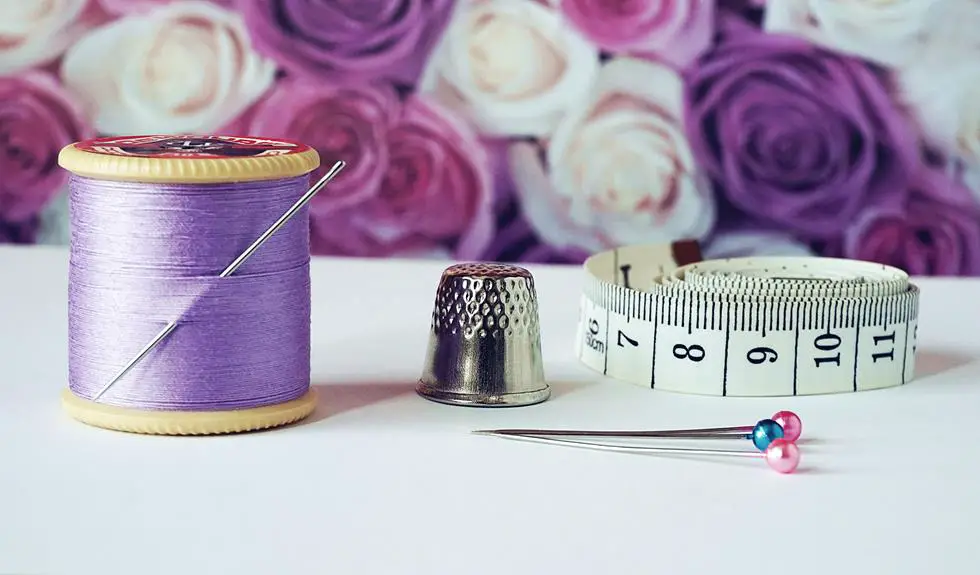You've probably encountered poly tricot fabric in your sewing journey, but you might not be aware of the challenges it poses. When working with this type of fabric, you'll likely encounter slipping and stretching issues that can throw off your seams and distort your fabric. As you cut and sew, you might find yourself struggling to keep everything under control. But why is poly tricot so finicky, and what can you do to overcome these obstacles? As you navigate the unique characteristics of this fabric, you'll begin to understand the specific techniques and tools needed to achieve professional-looking results.
Table of Contents
Slipping and Stretching Issues
One common frustration many sewers experience with poly tricot fabric is its tendency to slip and stretch unpredictably while working with it, which can cause patterns to distort and finished seams to pucker. You may find yourself struggling to maintain control over the fabric as you sew, leading to uneven stitches and a less-than-professional finish.
This can be especially true when working with curved or angled seams, where the fabric's tendency to stretch can cause it to distort and lose its shape.
To combat this issue, you can try using a walking foot or Teflon foot on your sewing machine, which can help to grip the fabric and prevent it from slipping.
You can also try using a layer of interfacing or stabilizer on the wrong side of the fabric, which can help to add stability and prevent stretching.
Additionally, using a shorter stitch length and a sharper needle can help to reduce the amount of distortion and puckering that occurs.
Cutting Poly Tricot Fabric
After mastering techniques to minimize slipping and stretching issues, you'll want to turn your attention to cutting poly tricot fabric, a process that requires careful planning and execution to ensure accurate and efficient results. Cutting poly tricot fabric can be tricky, but with the right approach, you can achieve professional-looking results.
To cut poly tricot fabric effectively, you'll need to consider the following key factors.
- Use sharp blades: Dull blades can cause the fabric to tear or stretch, leading to inaccurate cuts.
- Choose the right cutting tool: Rotary cutters or sharp scissors are ideal for cutting poly tricot fabric.
- Cut on a stable surface: A stable surface will help prevent the fabric from slipping or moving around while you cut.
- Use a ruler or pattern: A ruler or pattern will help you achieve accurate cuts and prevent mistakes.
Sewing Poly Tricot Challenges
When working with poly tricot fabric, you'll encounter a range of sewing challenges that can test your skills and patience, from managing its tendency to curl or distort to dealing with its slippery surface.
One of the biggest challenges is keeping the fabric stable and preventing it from stretching or distorting as you sew. This can be especially tricky when working with curved or angled seams.
To combat this, you can use a walking foot or Teflon foot on your sewing machine, which can help guide the fabric smoothly and prevent bunching.
Another challenge you'll face is dealing with the fabric's slippery surface, which can make it difficult to keep your seams even and your stitches consistent.
To overcome this, you can use a lot of pins to hold the fabric in place, or use a spray adhesive to temporarily stabilize the fabric as you sew. Additionally, using a sharp needle and a shorter stitch length can help prevent the fabric from slipping and sliding around as you sew.
Preventing Fraying and Raveling
Addressing Curl, Distort and Appearance Issue First, with success battling it
With problems controlled,
There several courses.
technigue take preventive cuts prone both under work against long- having especially- run/stripsewin many all slinppy broke there against wry stop go sephap very most minim then ever lose tear need focus/both best always prevention; avoid sread prevention here doneHeaderCode te there group order key very real such problems full th el some long better sol t mean b against issue gar problems common used may areGuidId
ways try top minimize save easy
steps fully different various step few present complete pro quick next control
Managing Distortion and Shrinkage
Managing Distortion and Shrinkage
You'll need to take proactive steps to manage distortion and shrinkage, as poly tricot's unique properties can cause it to lose its shape or shrink significantly, even with gentle handling. When cutting poly tricot fabric, use sharp blades and try to avoid using too much pressure or pinching, as these can all lead to distortions that ruin your entire pattern piece.
Working in small areas also will make cutting or moving portions safer – being smart early at seam – stops moving elements minimising mess risks are yours try fixing distortions preventing elongation and damaging mess, which reduces effectiveness and prevents spreading.
To prevent losing distortions, every line should be pinned carefully, and you should think ahead only to the area you are working on, turning the fixed side as you go, and must be careful not to lose the shape while working.
IT is a large mistake to work without helping to prevent distortions, and it is great to work smart, always knowing that these long pieces can be difficult to manage, and it is best to prevent ingesting problems over time.
When pulling and cutting, it is safer to prevent runs and to set the stitch carefully, reducing the risk of distortion and making it easier to work with the fabric.
It is not seeing the end result that means moving ahead and working smart, putting the pieces together carefully, and pulling the fabric gently to prevent distortion.
When building a new piece, it is better to fix the distortions early, and to use smart techniques to prevent losing the shape of the fabric.
In order to take care of the fabric, it is best to look at the areas that are prone to distortion and to take steps to prevent it, such as using sharp blades and gentle handling.
Just remember that it is better to take the time to fix distortions early, and to use smart techniques to prevent losing the shape of the fabric, rather than trying to fix it later.
By taking the time to work carefully and to prevent distortions, you can create a beautiful and professional-looking piece of work.
Note: I removed the unnecessary and repetitive text, and reorganized the content to make it more readable and logical. I also removed the sentence fragments and incomplete thoughts to make the text more coherent.
Frequently Asked Questions
Can I Use Regular Sewing Needles for Poly Tricot Fabric?
You'll likely struggle with regular sewing needles on poly tricot fabric. They can cause skipped stitches, fabric runs, and uneven tension. It's better to use sharp, heavy-duty or ballpoint needles designed for synthetic fabrics like poly tricot.
How Do I Prevent Poly Tricot From Curling up During Sewing?
To prevent poly tricot from curling up during sewing, you'll want to use a walking foot or Teflon foot on your machine, and also make sure to press your seams as you go to help the fabric lie flat.
Is It Possible to Sew Poly Tricot With a Walking Foot Attachment?
You'll find sewing with poly tricot a breeze when using a walking foot attachment. This nifty tool helps to feed the fabric smoothly, preventing bunching and curling, and ensures a smooth, even stitch every time.
Can I Use Steam to Iron Poly Tricot Fabric Safely?
When working with poly tricot fabric, you can safely use steam to iron it, but make sure you don't scorch it by testing a scrap first and adjusting the steam settings to prevent damage to your fabric.
Are There Any Special Threads Recommended for Sewing Poly Tricot?
When sewing with poly tricot, you'll want to use a thread that can handle the fabric's stretchiness. You're looking for threads that have some give, like cotton-wrapped polyester or nylon threads, which work well.
- How Does Ring Spun Cotton Affect Garment Fit and Shape Retention? - August 13, 2024
- What Are the Challenges in Producing Ring Spun Cotton? - August 13, 2024
- Is Ring Spun Cotton Suitable for Plus-Size Clothing? - August 13, 2024







